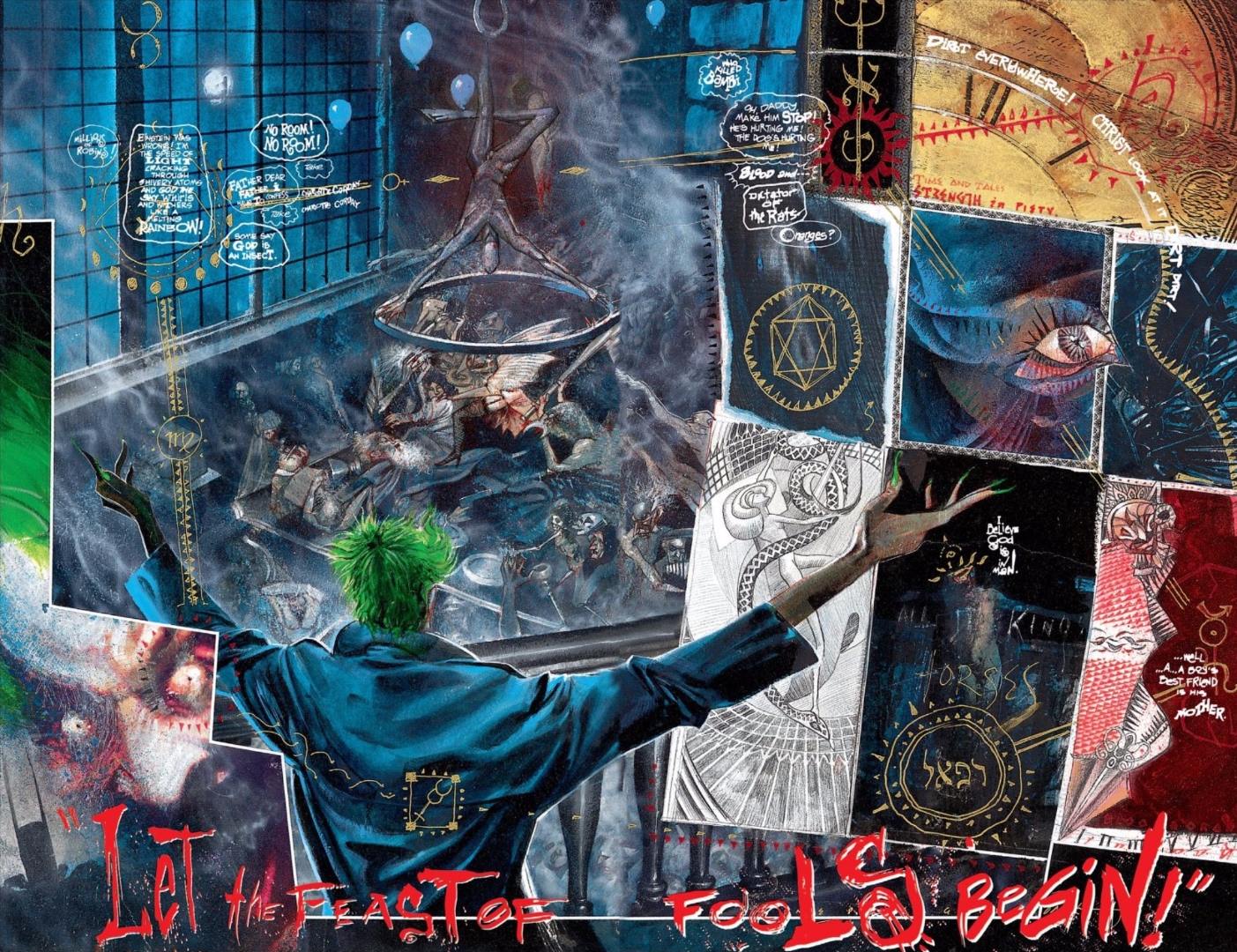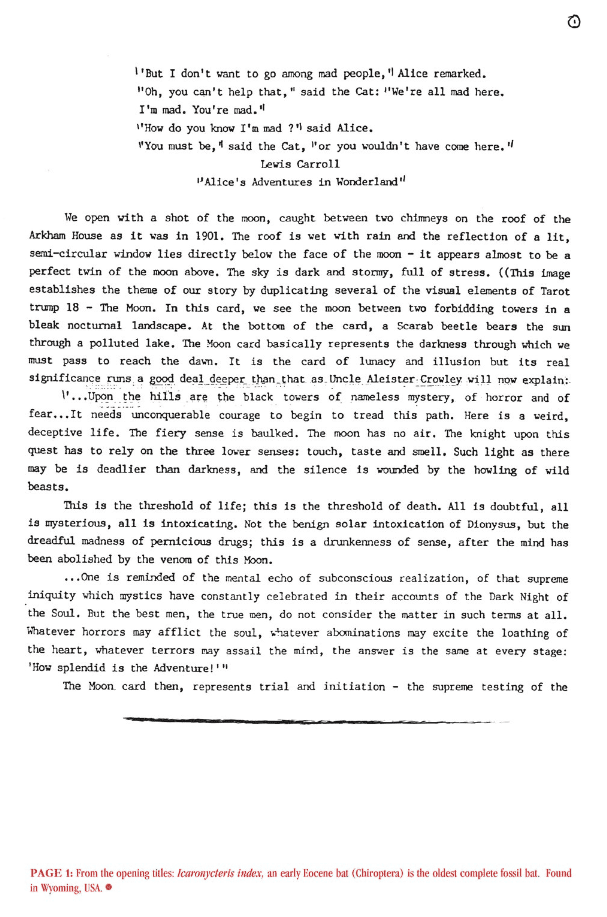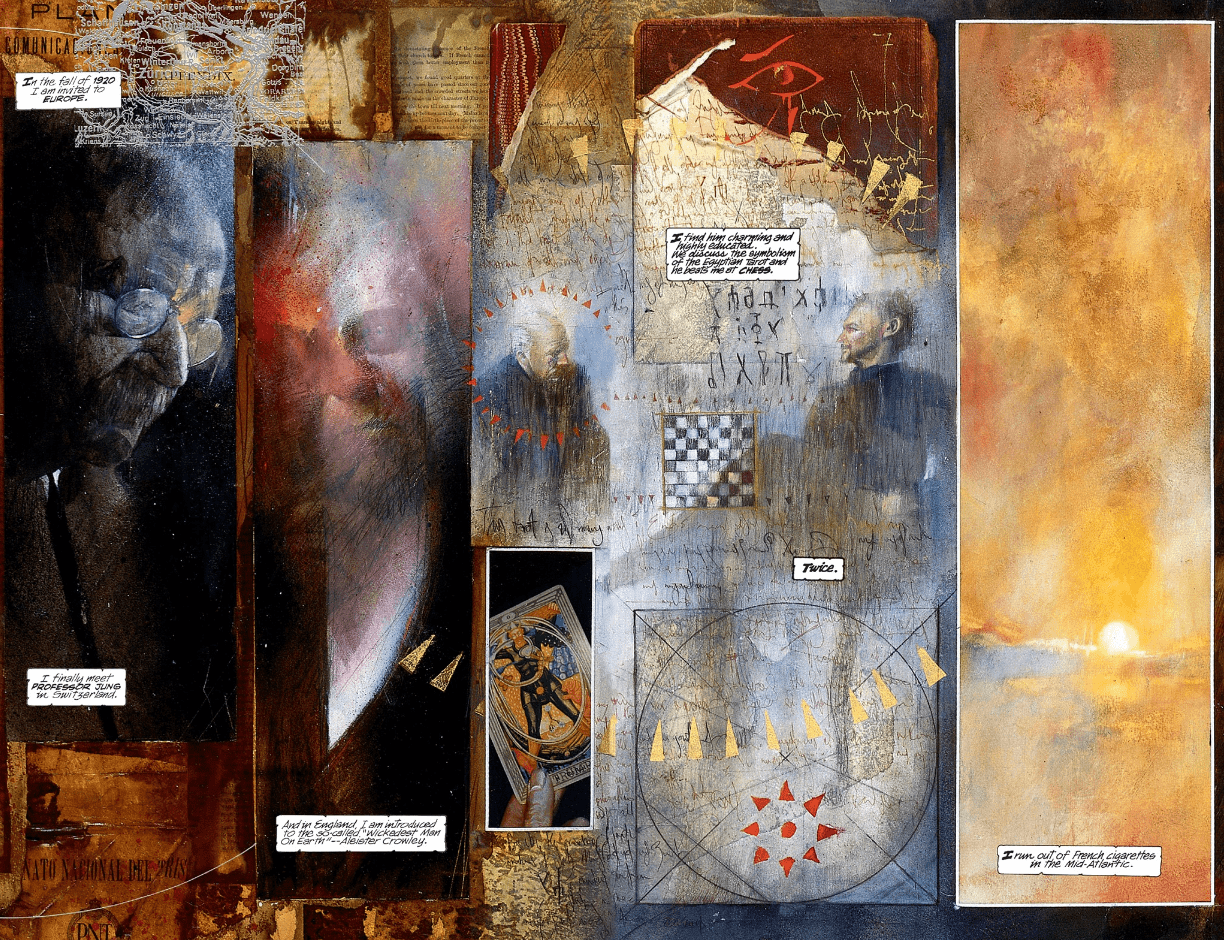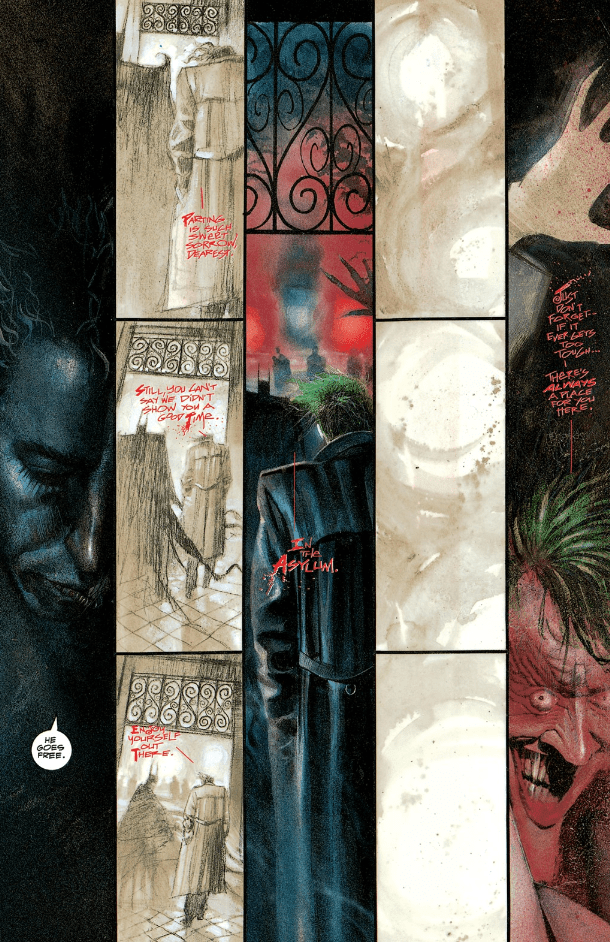Grant Morrison and Dave McKean’s Arkham Asylum celebrates its 30th anniversary this year; let’s take a look back and see what makes the story such a spooky, satisfying, and enduring read.

Batman has a multitude of villains, and throughout the collective characters’ 80 years, most have their defining or well known stories. But, what about locations? Yeah, you could just plop a character in a well known city/state (like New York), but to give life to a story, the landscape should breath on its own.
When someone mentions Metropolis, people think Superman. Wakanda — Black Panther. The list goes on. For Batman, it’s Gotham, but even more so is the fabled asylum — Arkham. There aren’t many instances where the general public can name the prison/asylum that characters go to, but this is one of them. Arkham Asylum leaves an impression.
This shows that, yes, a location can tell a story. Arkham wasn’t always so established, though. early on, it barely had a backstory. Enter Grant Morrison, Dave McKean, and 1989’s Arkham Asylum: A Serious House on a Serious Earth.
Like Celine Dion asks in her song, “what if walls could talk?” Well, that’s what Morrison and McKean set out to answer.
The inmates of Arkham have taken over the asylum, and the Joker has an important demand: he wants Batman. The Dark Knight makes his way to the madhouse to confront The Joker, and once inside, he faces his famous list of villains in a maze-like asylum when The Joker begins a deadly game of hide and seek.

Origins of Arkham Asylum
Arkham Asylum: A Serious House on a Serious Earth released on October 5th 1989 as a graphic novel from DC Comics. This trip through the Asylum was writer Morrison’s first foray into the Batman Universe; he and McKean were joined by letterer Gaspar Saladino, and editors Karen Berger and Art Young.
As publishers typically do with iconic works, DC Comics has released a multitude of editions for Arkham Asylum, but the edition that first added behind-the-scenes extras was the 15th Anniversary Edition. This edition included: a full script with annotations from Morrison, thumbnail layouts for the art by Morrison, and an aftermath from Berger, as well as a host of information that tells the story behind how the book came together.

The next few bits of information are from the extras in the 15th Anniversary Edition.
- Morrison explained that the subtitle (A Serious House on a Serious Earth) originated from the 55th line of Philip Larkin’s poem Church Going. He also spoke on the inspiration of where the themes came from: “[Arkham Asylum was] inspired by Lewis Carroll, quantum physics, Jung, and Crowley; its visual style by surrealism, Eastern European creepiness, Cocteau, Artaud, Švankmajer, the Brothers Quay, etc.“
- Originally Morrison wanted Brian Bolland as the artist for Arkham Asylum: A Serious House on a Serious Earth, as he wanted it to look more realistic. Instead, McKean was tasked with the job. Morrison criticized McKean’s choice of making the novel more abstract, adding that their two styles clashed and competed with the novel’s symbolic systems. Later, he said this clash of creators was the story’s greatest weakness.
- In what may be one of the funniest quotes in the Anniversary Edition, Morrison says, “Who’s laughing now, asshole?” This was pointed towards people in the comic book industry that got a hold of an early script version and called it “pretentious.” In context, this quote is quite hilarious with all the stories in varying media that the graphic novel has inspired.

In The Name
The idea of a story revolving around a building instead of a character is present in the name: Arkham Asylum: A Serious House on a Serious Earth. The cover still has Batman’s name on it, but in smaller text than others. And “Batman” is usually cut out when the story is talked about, with most people simply calling it Arkham Asylum.
Although it may focus on Batman making his way into Arkham to face his notorious nemeses, A Serious House relies more upon the history of the Asylum and its residents.
By using Batman as a narration device, Morrison essentially gave the fabled Asylum an expanded backstory. There’s no “big bad” villain for Batman to face off against, either, which is atypical of a superhero comic. Instead, Arkham Asylum: A Serious House revolves around a grand tour of the Asylum as The Joker forces Batman into a game of hide and seek. This form of storytelling gave Morrison and McKean the ability to focus on a multitude of villains, while still making it read organically.
Morrison and team sprinkled in a great deal of backstory of the Asylum’s founder—Dr. Amadeus Arkham. Dr. Arkham was originally conceived in Len Wein’s Who’s Who: The Definitive Directory of the DC Universe #1, but it wasn’t until Morrison took the character and his tragic backstory, making it even more heartbreaking.
Residents of The Asylum
What is an asylum without its residents? Morrison added his own take on these inmates (villains) that live inside of it. A few of these changes ended up sticking in future iterations. There weren’t many, but the most significant were Maxie Zeus receiving electricity powers, a more reptile Killer Croc, and Mad Hatter being obsessed with Alice in Wonderland. The latter became a defining character trait for the character.
A more controversial change was Mad Hatter’s obsession with children, especially ‘little’ girls, essentially making him a pedophile/child molester. Although he wasn’t around for a large page count, this change-up was a huge departure, and a taboo subject. That wasn’t the only ‘taboo’ area Morrison went for.
In a few scenes, Morrison paints Joker ‘in love’ with Batman. Or as it’s been said in the past, in a homosexual fashion. In the script Morrison originally added that Joker would “wear make-up and black lingerie in parody of Madonna.” This was shot down by DC Comics due to the success of the recent live-action Batman movie, but Morrison added in two other characters cross-dressing.
Joker is also dubbed as possessing ‘Super-Sanity’, an idea Morrison planted here and returned to later in his Batman run.
Although a few other characters are changed, they aren’t that different, or significant enough to mention.

Drawing on The Asylum’s Walls
As groundbreaking and crazy as Morrison’s writing is, Dave McKean’s art takes this graphic novel to another dimension. McKean’s art style is insanely distinct, enough so that you can instantly tell it’s his work. McKean is known for his ability to combine a multitude of media in his works of art. This skill is showcased to the max here as he mixes paints, photography, and the usual drawings, all in a media mashup, making each page a work of art.
At times, McKean’s art does feel muddy or hard to comprehend, but that’s part of its charm. The art helps the atmosphere greatly, much like the hard-to-read lettering (we’ll get to that). The art makes you feel as if you were there with Batman, even if it isn’t realistic. Each panel/page brings something new and unique to the table, while keeping the maze-like feeling, making the reader feel uneasy in each moment.
McKean himself didn’t feel the same, though, calling his own art “overpainted, lavish illustrations in every panel just didn’t work. It hampers the storytelling.” But, we’d have to strongly disagree.
And while McKean’s art may take Arkham Asylum to another dimension, letterer Gaspar Saladino does one of the best lettering jobs in any dimension, while being the hardest to read. As great as this story is, a common complaint from readers is that the lettering is hard to read at times. Is this true? Yes.
But, is it a problem? Actually not so much. At times you may need to reread a piece of dialogue, but when you do, you’ll catch more information. Negativity aside, Saladino’s lettering is one of the best seen in any comic. Each character has a differing dialogue balloons, with some not even having a balloon at all.
Saladino plays with font size, style, color, and placement so much that the reader feels like they’re in the Asylum. That’s how the ‘hard to read’ lettering can be interpreted, while it gives a certain uneasiness to the claustrophobic asylum. Plainly put, Saladino’s seemed to make the lettering hard to follow/read at times on purpose to help amplify the feeling seen throughout Arkham Asylum: A Serious House.

30 Years Later
Thirty years later and Arkham Asylum: A Serious House’s plot, art, and lettering is still a sight to behold. This famous story can be traced to a multitude of inspirations for future Bat-centric stories, especially 2009’s Batman: Arkham Asylum video game. Some themes also reemerge later throughout Morrison’s seminal run on Batman.
Should you read it? Hell yeah! Now’s the best time with the recently released Absolute Edition! It seems the 30th Absolute Edition comes with even more afterwards as well, and what may be the biggest change: McKean went back and restored the art himself. Look below for how great it looks!
Mckean himself handle the art reproduction and I’m blown away from the differences in this edition. pic.twitter.com/PTUnRtVHLg
— Christian Ward (@cjwardart) October 19, 2019
After 30 years, you can still go back and read Arkham Asylum: A Serious House and find something new. That’s the magic that’s kept this story in the zeitgeist all these years, and which will keep it relevant for the next 30+ years.
Have you read Arkham Asylum: A Serious House? If so what do you think? Is it in any of your top lists? Let us know below!
Side Note: Check out Michael Fromm’s list of 10 scary DC Comics that includes Arkham Asylum: A Serious House and other great titles!

